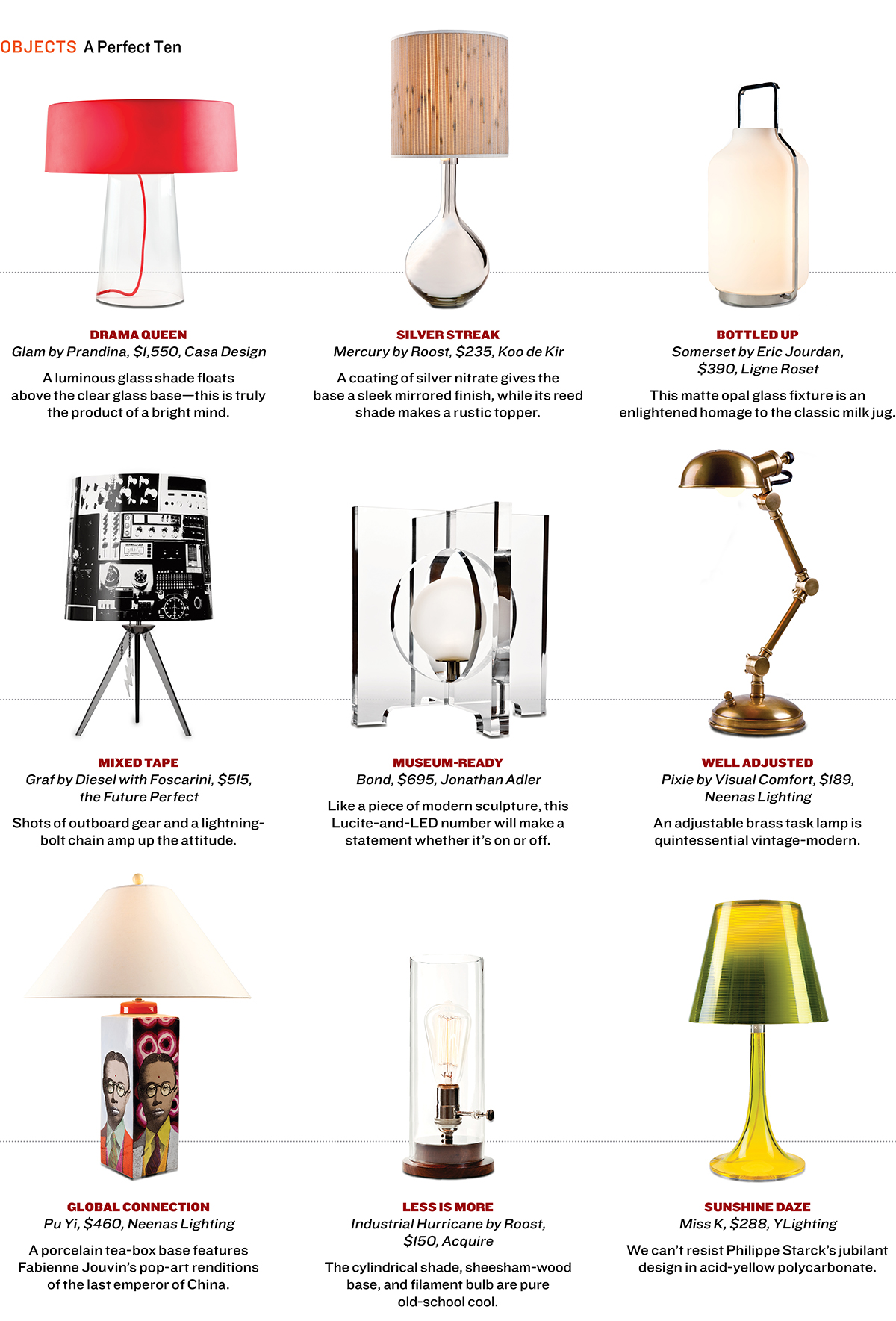All Aglow
 WHEN THOMAS EDISON put the finishing touches on his incandescent bulb, he couldn’t have known how radically the radiant orb would change the way we live. No longer beholden to the sun (or whale oil), we now sleep less and work more. Whether it’s made our lives better or not, the invention has spawned an industry dedicated to harnessing the magic of light.
WHEN THOMAS EDISON put the finishing touches on his incandescent bulb, he couldn’t have known how radically the radiant orb would change the way we live. No longer beholden to the sun (or whale oil), we now sleep less and work more. Whether it’s made our lives better or not, the invention has spawned an industry dedicated to harnessing the magic of light.
In fact, almost every well-known designer has tried his or her hand at creating a signature lamp. (Think: George Nelson’s Bubble Lamp or Tiffany’s stained-glass numbers.)
To help brighten the season’s dark days, we sought out the classiest, quirkiest, and most innovative light-emitting objects in town. And we discovered some exceptionally covetable pieces.
But how to choose between such beauties? We asked Lana Nathe, principal designer of Boston’s Light Insight Design Studio and a 21-year industry veteran, for pointers. Not surprisingly, she advised us to consider more than just good looks before laying down the cash.
According to Nathe, when it comes to lamps, size matters most. The scale should complement other decorative elements in the space, especially the table on which the lamp sits. If it’s too big or too small, it will become a major décor “don’t.”
Generally speaking, says Nathe, table lamps need help from other light sources, because even though low-level lighting may be fine most of the time, it could turn into a source of frustration when you need to find your contact lens in the Berber carpet. To accommodate different brightening needs, designers frequently conceal stronger lighting within a home’s architecture, and use table lamps and pendants as accents.
Consider the room’s color, too: Pale walls and surfaces will reflect light, while dark colors and wood will absorb it, requiring more output. “If [walls are] textured – like brick or stone – you may want to highlight the surface for added drama,” adds Nathe. This is where an uplight could really shine. Also keep in mind that a single light source combined with reflective surfaces (shiny countertops, glass tables) is a recipe for glare, so make sure to balance your choice with other diffused lights.
“People are working from home more and more, necessitating a higher quantity of light. It affects people and their energy,” says Nathe. Getting it right is critical. “Your home is your refuge and place to rejuvenate. It should inspire.”
Light Insight Design Studio, 318 W. 2nd St., Boston, 617-268-1122, light-insightdesign.com.